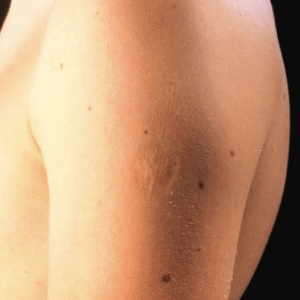The users were then required to charge the brush by rubbing the bristles on the hair or clothing. They would then bring the brush near the affected area of the body. An advertisement as late as 1882 advertised the “electric” toothbrush as a cure for rheumatism, sciatica, gout, nervous debility, and many more. The brushes also had a compass to show the magnetic side of the brush. When placed close to the brush, the compass spins rapidly.

Dr. Scott did not stop at inventing toothbrushes. He invented such things as electric curry combs for horses, which he claimed worked like the “electric” toothbrush. Electric corsets for women, body belts, wristlets, and nerve and lung invigorators. All of which were magnet therapy.
Even though the interest in magnetic treatments declined by the 1890s, Dr. Scott’s “electric” toothbrush is a unique artifact of dental history. It illustrates how inventions and pseudo-sciences were frequently mixed during the late nineteenth century.






